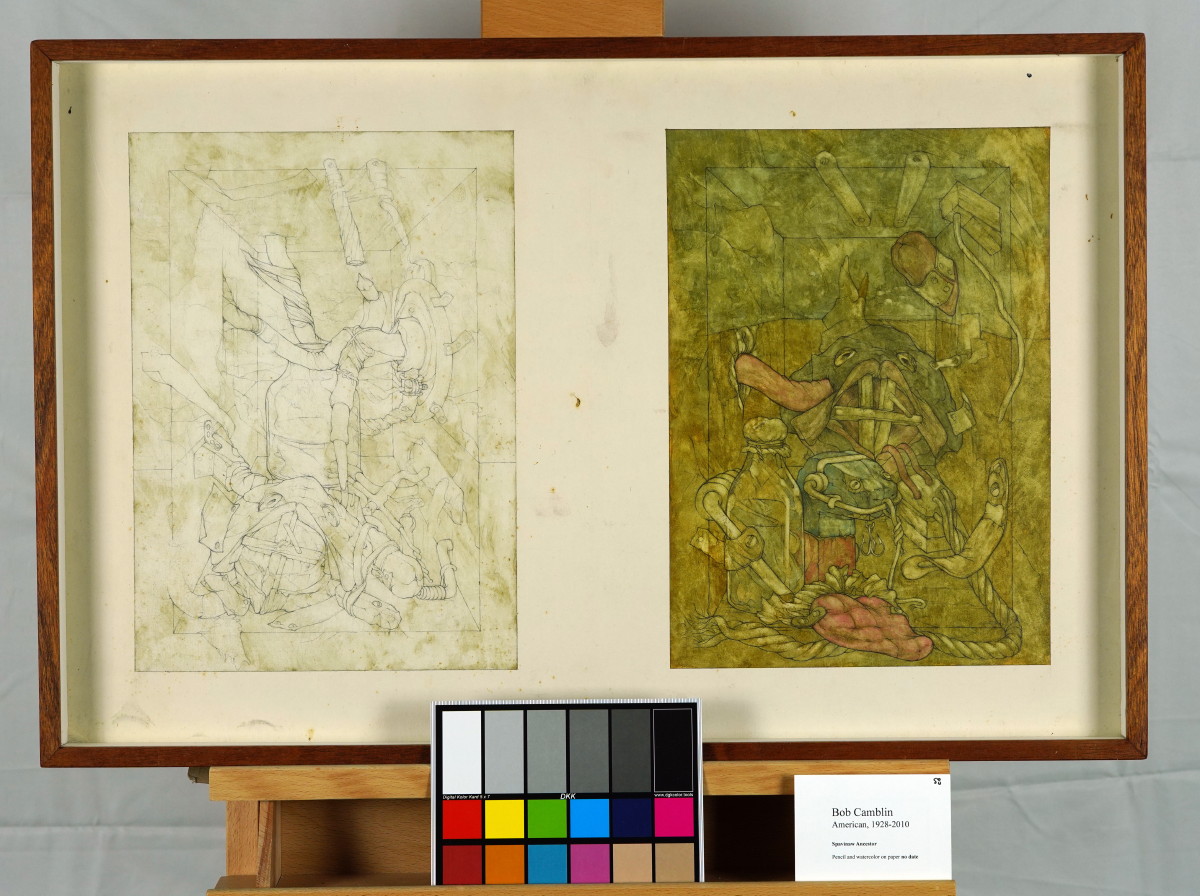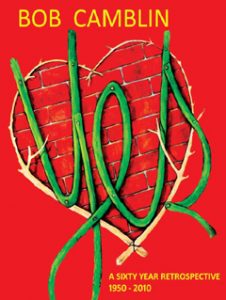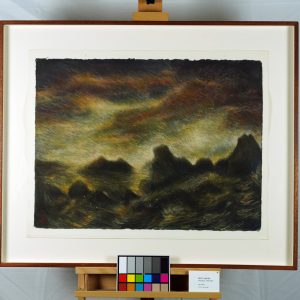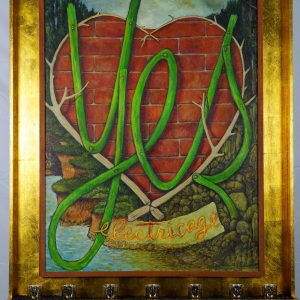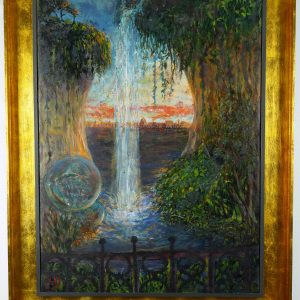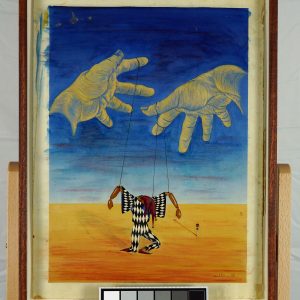Description
Spavinah Ancestor, no datePencil and watercolor
Unsigned (what’s the reason for this?)
14 x 24 in. (image)
18.75 x 28.5 (frame)
original, includes certificate of authenticity from ArtTrust
The painting “Spavinaw” presents two side-by-side panels with intricate depictions of what appear to be mechanical-organic hybrids. The left panel features a figure amalgamated with plant-like and technological elements, while the right panel displays a catfish, skull-like structure, evoking both animalistic and skeletal qualities. The earthy tones and textured surfaces lend a feeling of decay or transformation, capturing the merging of natural and artificial forms.
From a Zen perspective, this artwork may symbolize the transient nature of existence and the interconnectedness of all things. The blending of organic and mechanical elements reflects the concept of “form and emptiness” where boundaries between distinct entities dissolve, revealing the unified essence of life. The deterioration of the objects may indicate the impermanence of worldly possessions and forms, inviting contemplation on the constant flow and transformation inherent in the universe.
The I Ching hexagram that comes to mind is “Hexagram 18: Work on What Has Been Spoiled.” This hexagram suggests the need for repair and renewal, acknowledging decay but urging action to address and transform it. The depiction of fragmented, decaying objects could signify a process of renewal, where old forms give rise to new manifestations. The artwork reflects the cyclical process of decay and rebirth, emphasizing that repair requires attentiveness and the recognition of underlying principles.
The artwork could be understood as a commentary on the modern human condition, grappling with the consequences of technology’s intrusion into natural life. It portrays a state where the natural world and technological advances intertwine, creating a hybridized existence that may be viewed as both unsettling and necessary. This duality prompts reflection on the impacts of industrialization and environmental degradation while also recognizing the potential for harmony or reintegration between humanity and nature.
The piece aligns with movements such as Surrealism and Dadaism, where dream-like and fantastical imagery questions reality and challenges perceptions. The merging of organic and synthetic elements can also be linked to contemporary ecological art, which addresses themes of environmental awareness and the effects of human activity on the planet. The use of earthy tones and complex textures suggests influences from artists who incorporate themes of decay and rebirth, such as Max Ernst or Jean Dubuffet. This art serves as a visual metaphor for the Anthropocene, an era defined by human impact on Earth’s geology and ecosystems.
*Shipping cost will vary, please inquire at sales@camblingallery.com before purchasing.
Currently ships from Oregon, USA
Member of artnet? Apply for a discount! Inquire about intergallery and permanent loans for museums.
“Spavinah Ancestor” was featured in his Yes Retrospective
Reproductions of this drawing are available in multiple sizes!
Click here to use our high-resolution viewer!
This artwork is available with a non-fungible token to ensure traceability and transparency of provenance.
The royalty factor – Unlike traditional artworks, such as paintings, mosaics, statues, and the like, NFTs can be programmed to provide royalties to you every time the painting (and token) is sold and resold – for eternity. That mind-bending Camblin you sold could be worth millions one day and provide income for your great-great-great grandkids!
Anti-forgery – The central idea underpinning NFTs is that they are built on the blockchain, which is meant to offer advanced security. Think of it like an un-erasable and un-avoidable copyright.
Easy authentication – Another compelling aspect of NFT art and NFTs in general is the ability to quickly and easily authenticate items, as the record of ownership is scrupulously kept on the blockchain.
